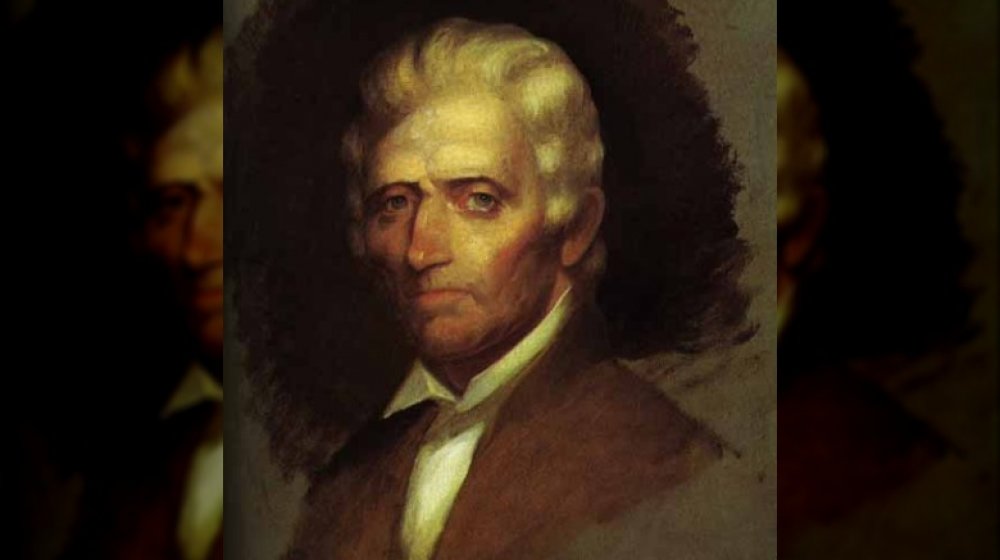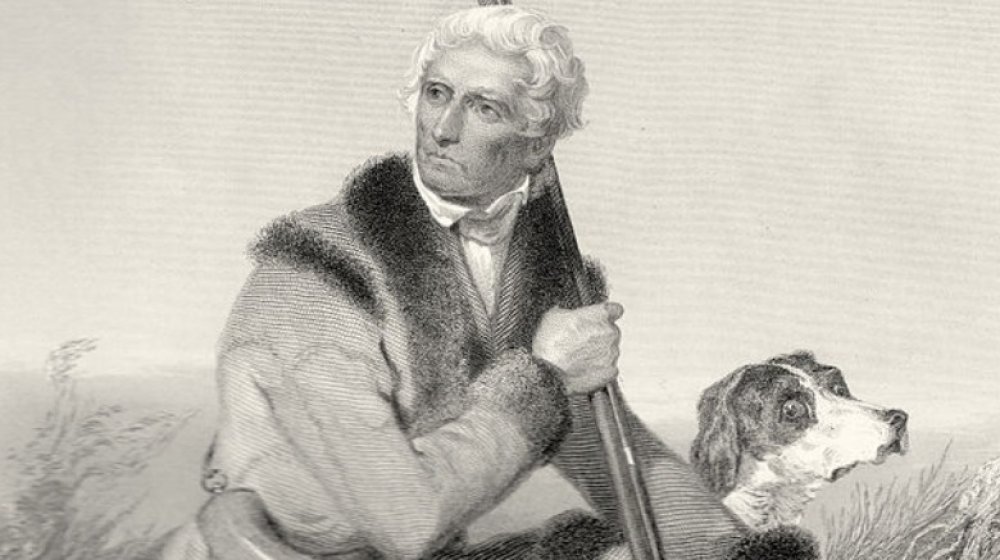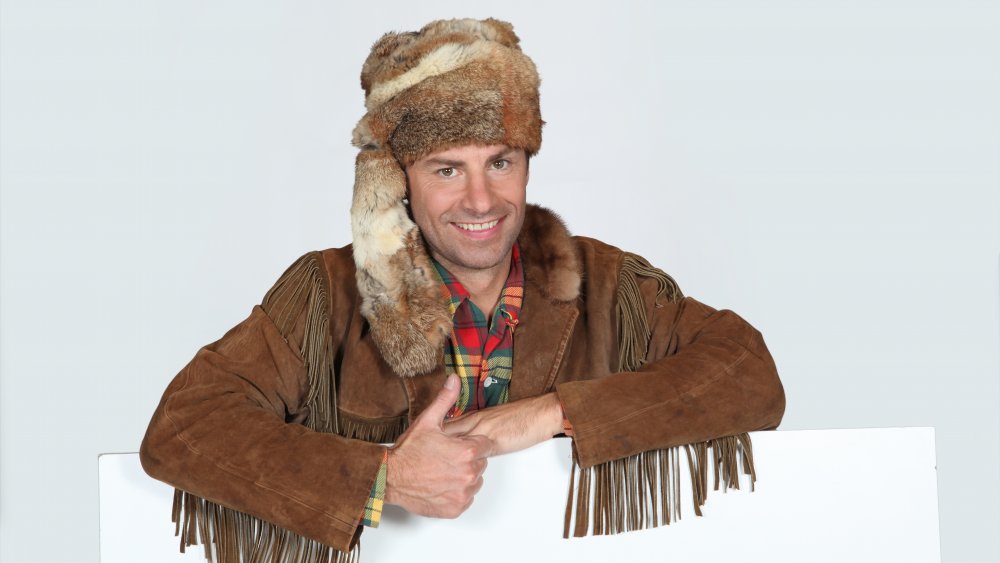The Tragic Life Of Daniel Boone
Those of a certain age might be forgiven for confusing Davy (though he preferred David) Crockett and Daniel Boone. Their timelines overlap, though Boone, born in 1734, could have been a grandfather to Crockett, born in 1786, according to History. Most of the confusion comes, however, from television, which is perhaps no surprise, since the same actor — a Texan named Fess Parker — portrayed both historical figures with great success over the course of his career, first Crockett for Disney, then Boone for his own production company. Parker made a lateral transfer to Boone, taking with him a flintlock rifle and a coonskin cap.
Boone really did take on the wild frontier first. He was born in Pennsylvania to Quaker parents when it was just being settled by Europeans, says Biography. He received his first rifle at 12 and soon became remarkably proficient in a time when most hunters were remarkably proficient. He learned to track, trap, and hunt, and though he never received any formal education, he could read and write, often taking books with him on his hunting expeditions.
He served as a wagon driver during the French and Indian War in 1754, narrowly escaping death more than once. In 1756 he married, to Rebecca Bryan. In time they would have 10 children together. (Boone was one of 11.) They would remain married until her death in 1813.
He earned his living as a hunter and guide
No question that life on the frontier was unimaginably difficult. (Indoor plumbing alone was far, far in the future.) Settlers were moving into hunting grounds and lands claimed by Native American tribes, who sometimes pushed back, sometimes violently. Boone was responsible for helping create The Wilderness Road, a track that led through the Cumberland Mountains and into the rich, previously unsettled (by Europeans) land known as "Kentucke."
He largely supported his increasingly large family by hunting and trapping, going on long expeditions into the wilderness. He founded a settlement, Boone's Station, later known as Boonesborough, in what's now Kentucky, one of the first English-speaking settlements west of the Appalachian Mountains.
Boone and his family lived there from 1775-79. During that time his daughter Jemima was kidnapped by Native tribes. He rescued her, but fell captive himself in 1778, says History. He was adopted by Shawnee tribe's chief, and given his own tribal name, but escaped after four months and returned to warn the settlement of the imminent attack. He led the successful defense of the village during a nine-day siege.
He was involved in other battles as well — he was well regarded as a militia leader — and took part in one of the last skirmishes of the American Revolution, the Battle of Blue Licks in 1782, where his son, Israel, died in front of him. Another son, James, had been killed in a battle with Native Americans at the age of 16, says Daniel Boone Trail.
He didn't actually like coonskin caps
Boone's life was a series of crests and valleys. He tried to speculate in land, often too aggressively, and ended up losing investments repeatedly. Some of his losses involved being swindled; other times, he failed to file proper documentation. He moved his extended family from Kentucky to Missouri, then under Spanish control. The government there welcomed him warmly, named him a magistrate, and awarded him 850 acres. When that became part of the United States he lost that land; he petitioned for its restoration, and the president himself granted that, only for Boone to be forced to sell his property to settle old debts that had caught up with him. When all was settled, after a lifetime of public service, adventure, danger, and courage, he had 50 cents to his name.
He volunteered to fight in the War of 1812 (they turned him down) and continued to hunt from his home in Missouri. He died of natural causes on September 26, 1820, 86 years old. As for that coonskin cap: it made for a good visual on Fess Parker, but historically it's a bust. Boone didn't like fur hats; he thought them "unstylish," says History, preferring beaver felt hats instead.


